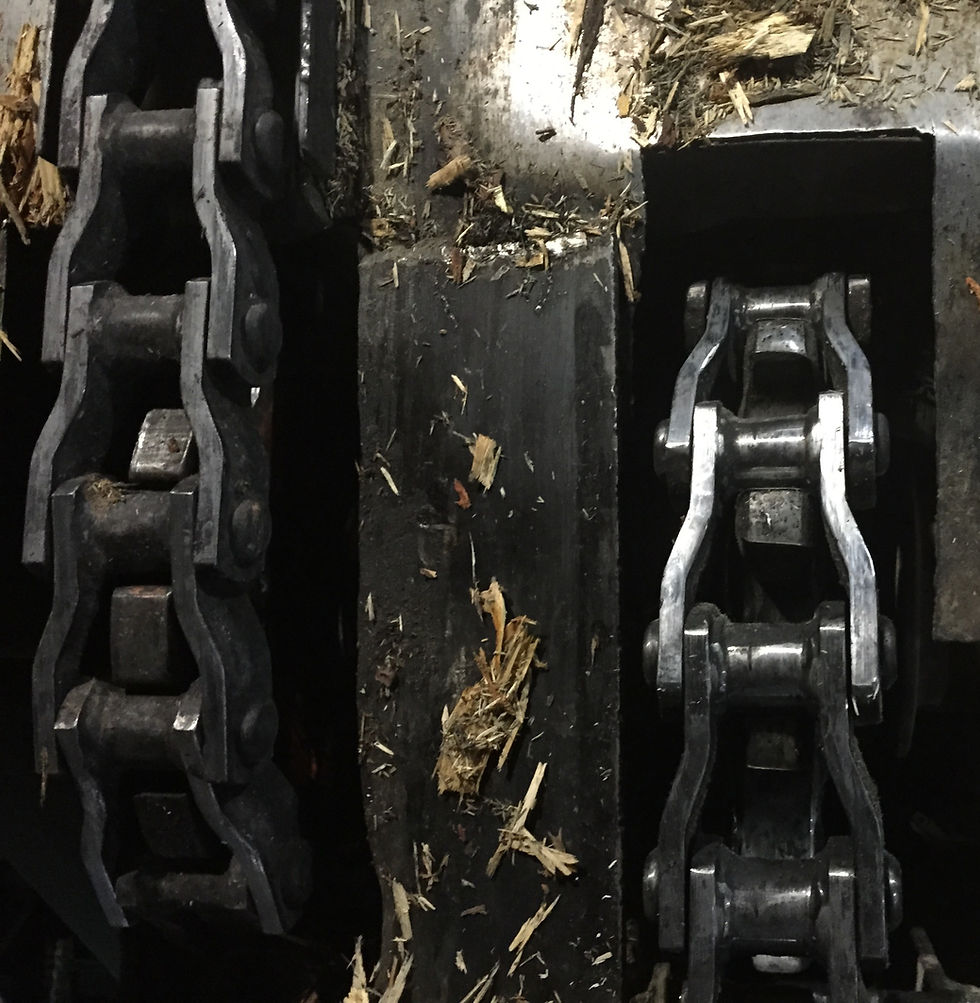Should I Change the Sprocket When I Change the Chain?
- Admin
- Apr 26, 2023
- 4 min read
Updated: May 25, 2023
Contents:
There are two schools of thought on the right time to replace your sprocket with a new one:
Change your sprockets with every new chain
Change your sprockets only when they’ve hit the very end of their usable life
Each operation has their own policy regarding maintenance procedures. This article will compare the strengths and weaknesses of each approach.
What Happens When a Sprocket Wears Out?

Even the highest quality sprockets eventually hit the end of their useable life. Running your chain on a sprocket with heavy wear will lead to increased engagement between the sprocket teeth and the barrel, causing the teeth to catch on the barrel instead of smoothly releasing.
This hooking effect places undue pressure on the chain as the sprocket rotates without freely releasing the barrel. Not only does this accelerate the degradation of the sprocket teeth, it significantly decreases the lifespan of your chain.
Chains function optimally when rolling on and off of teeth with a direction of movement parallel to the movement of the chain. Hooking adds an effect similar to the plucking of a guitar string, causing increased resonance along the chain, and elevating the risk of breaking links in the chain. The hooking effect of a worn sprocket creates an audible rattle, although the increase in volume can be difficult to recognize as component wear occurs gradually.
If your application requires sprockets to be used in both directions (forwards and in reverse), check out our article on maintenance tips for information on using sprockets in reversing applications.
How To Tell If Sprockets Are Worn Out

In order to preserve the integrity of the chain, sprockets should be monitored for wear on a regular basis. Wear is measured at the pitch circle diameter (PCD), where the chain barrel contacts the working surface of the sprocket. The rule of thumb is when the wear on a sprocket tooth (shown here as X) reaches 10% of the tooth width (shown here as Y), the sprocket needs to be replaced. Sprocket teeth can be surface hardened or through hardened to prolong their working life.
Here's an article explaining how to mark your sprocket wear point before installation to easily monitor wear.
How To Tell When a Chain Is Worn Out

Modern chain is a durable and robust product, with high load tolerance and a predicable plane of movement that allows it to be used in most industrial settings. Generally, chains only reach the end of their useable life when the pins and bushings that connect the links deteriorate due to wear, and cause the chain to “stretch” past the manufacturer’s recommended maximum allowance.
The word “stretch” is commonly used across the industry, but is a bit of a misnomer, as the steel parts aren’t exhibiting elastic properties, but instead wearing down. This causes tight tolerances to become more of a loose fit, causing the chain to elongate. We’ll stick with stretch just to stay consistent though.
The industry standard is that when a chain has stretched 3% it has reached the end of its useable life. Measure your chain from pin to pin against the manufacturer's listed specifications to compare with the pitch of your chain. It's best practice to measure the chain over a distance of several links at multiple points and to take the average to determine chain wear.
Do You Have to Change Sprockets with a New Chain?
A common question when it comes to sprockets and chain maintenance is "should I change the sprocket when I change the roller chain?". We think changing out a sprocket when you change chains is the best option, providing optimal lifespan for overall system components.
Some sources claim that a new sprocket is only required after wearing out three chains.
Peak performance and maximum component lifespan occur when both sprocket and chain are brand new. Each sprocket tooth is designed with the chain pitch in mind to ensure optimal efficiency. As the sprocket tooth wears down at points of high contact, the chain is placed under a higher load, as the pitch of a new chain no longer matches that of the sprocket. This causes accelerated wear on the chain, and the chain stretches slightly, leading to a period where the chain and sprocket break in together.
It is true that chains typically reach their 3% stretch threshold (signifying the end of their working life) long before a sprocket passes its 10% wear metric, but reusing this sprocket with a new chain without regard to the mismatch in pitch accelerates the rate of subsequent chain wear so significantly that many operators find the compromise is not worth the savings.
A new chain that doesn’t match the existing wear pattern on your sprocket will also accelerate the wear on your sprocket, causing the whole system to reach the end of its life prematurely.
In case it’s not obvious yet, we’re believers in replacing sprockets at the same time as your chain in the majority of applications. This can be a complex decision with factors including plant downtime and installation costs affecting the project’s overall bottom-line, and there are also intangible factors to consider, such as less operating noise with new machinery components, and decreased risk of sudden breakdowns. We’ll leave the decision up to you.
Can I Use My Old Chain with a New Sprocket?
If your chain has not exceeded that 3% stretch threshold, it may appear to have useful service life remaining.
Using a worn chain on a new sprocket does create a new issue to be aware of. The old chain will have stretched slightly, and even a marginal increase in pitch length can mean that your chain will ride up on the unworn sprocket tooth, leading to slippage and causing damage to your equipment.
Practically speaking though, chains wear out faster than sprockets, so it’s almost always the right call to just replace your chain when installing a new sprocket.
For more cost-saving tips, sign up for our newsletter and check out this article on getting the best service life out of your sprockets.



Comments